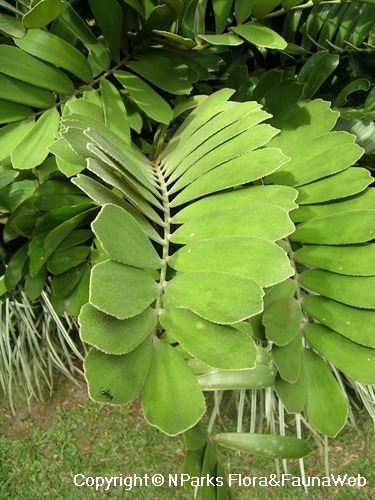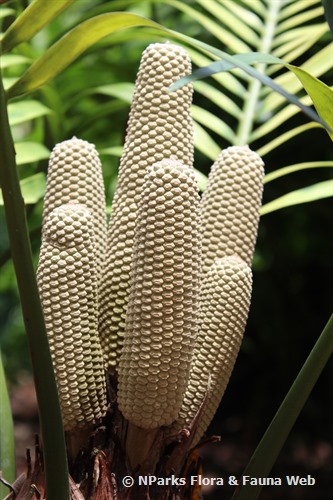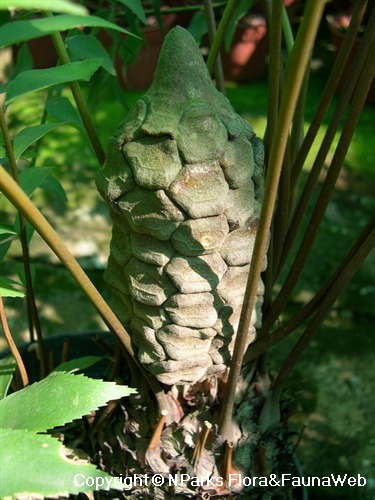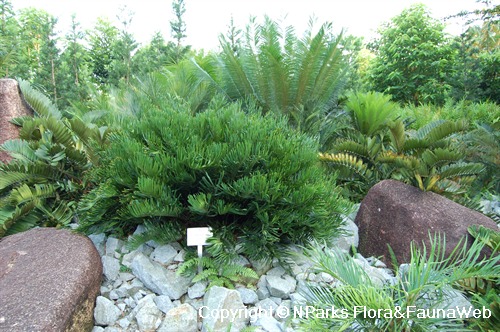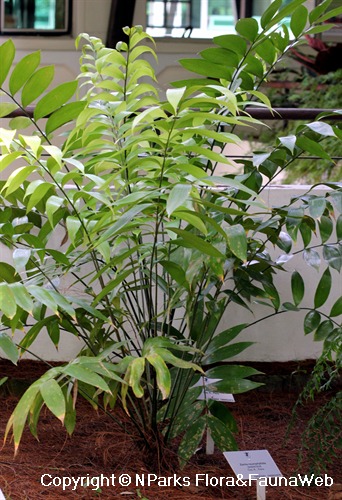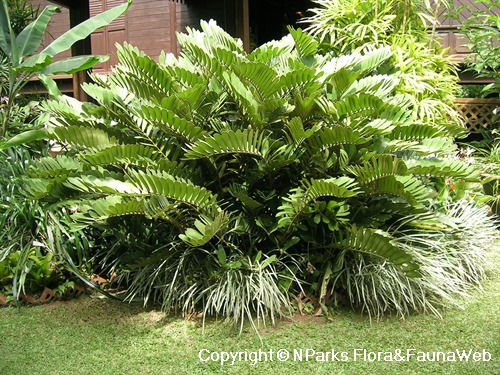
Name
Classifications and Characteristics
| Plant Division | Gymnosperms (Non-Flowering Seed Plants) (Cycad) |
|---|---|
| Plant Growth Form | Cycad |
| Lifespan (in Singapore) | Perennial |
| Mode of Nutrition | Autotrophic |
| Plant Shape | Shrubby |
Biogeography
| Native Distribution | Mexico |
|---|---|
| Native Habitat | Terrestrial |
Description and Ethnobotany
| Growth Form | It is a cycad, with underground stem which slowly becomes aboveground with age. |
|---|---|
| Foliage | Leaves are green, 45 – 190 cm long and 10 – 30 cm wide, comprises of 8 – 18 pairs of leaflets and armed with small spines along the petiole and rachis. Leaflets are leathery, obovate to oblanceolate shaped, margin slightly toothed and covered in yellowish brown hairs. |
| Reproductive Parts - non-flowering plant | Pollen cones are erect (17 cm long and 1.8 cm wide) and occurs in 2 – 4. Seeds are oval shaped (1.6 cm long and 1.2 cm wide), yellowish green at first and becoming red when mature. |
| Cultivation | It is salt tolerant and can tolerate short period of drought once established. |
| Etymology | Latin, furfuraceus means scurfy or covered with bran-like scales or powder, which refers to persistent yellowish brown hairs on the leaves. |
Landscaping Features
| Landscape Uses | Parks & Gardens |
|---|
Plant Care and Propagation
| Light Preference | Full Sun, Semi-Shade |
|---|---|
| Water Preference | Little Water |
| Plant Growth Rate | Slow |
| Rootzone Tolerance | Drought Tolerant, Well-Drained Soils, Saline Soils / Salt Spray |
Foliar
| Mature Foliage Colour(s) | Green |
|---|
Fruit, Seed and Spore
| Mature Fruit Colour(s) | Green, Red |
|---|
Image Repository
Others
| Master ID | 1290 |
|---|---|
| Species ID | 2583 |
| Flora Disclaimer | The information in this website has been compiled from reliable sources, such as reference works on medicinal plants. It is not a substitute for medical advice or treatment and NParks does not purport to provide any medical advice. Readers should always consult his/her physician before using or consuming a plant for medicinal purposes. |

